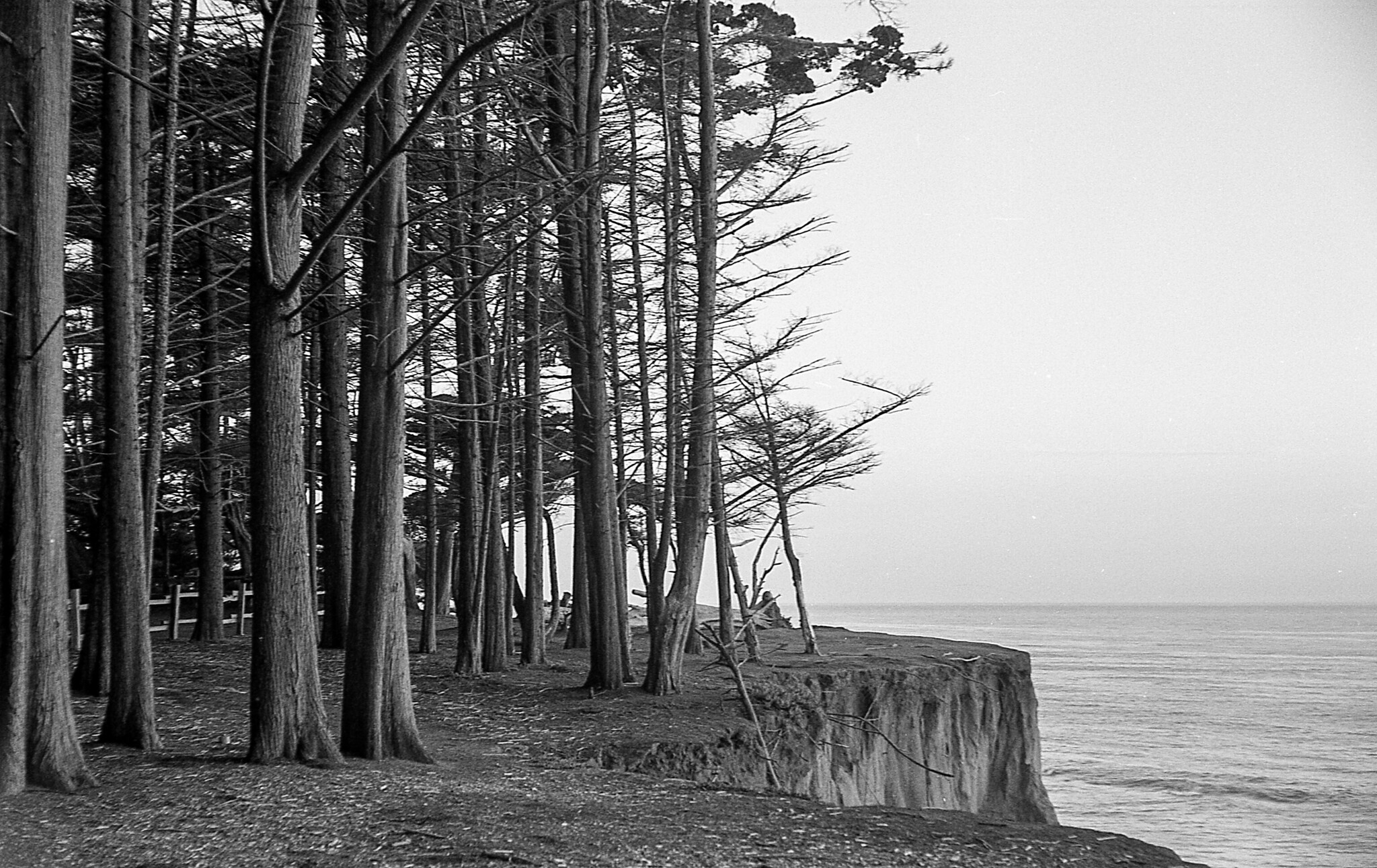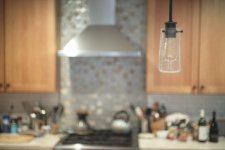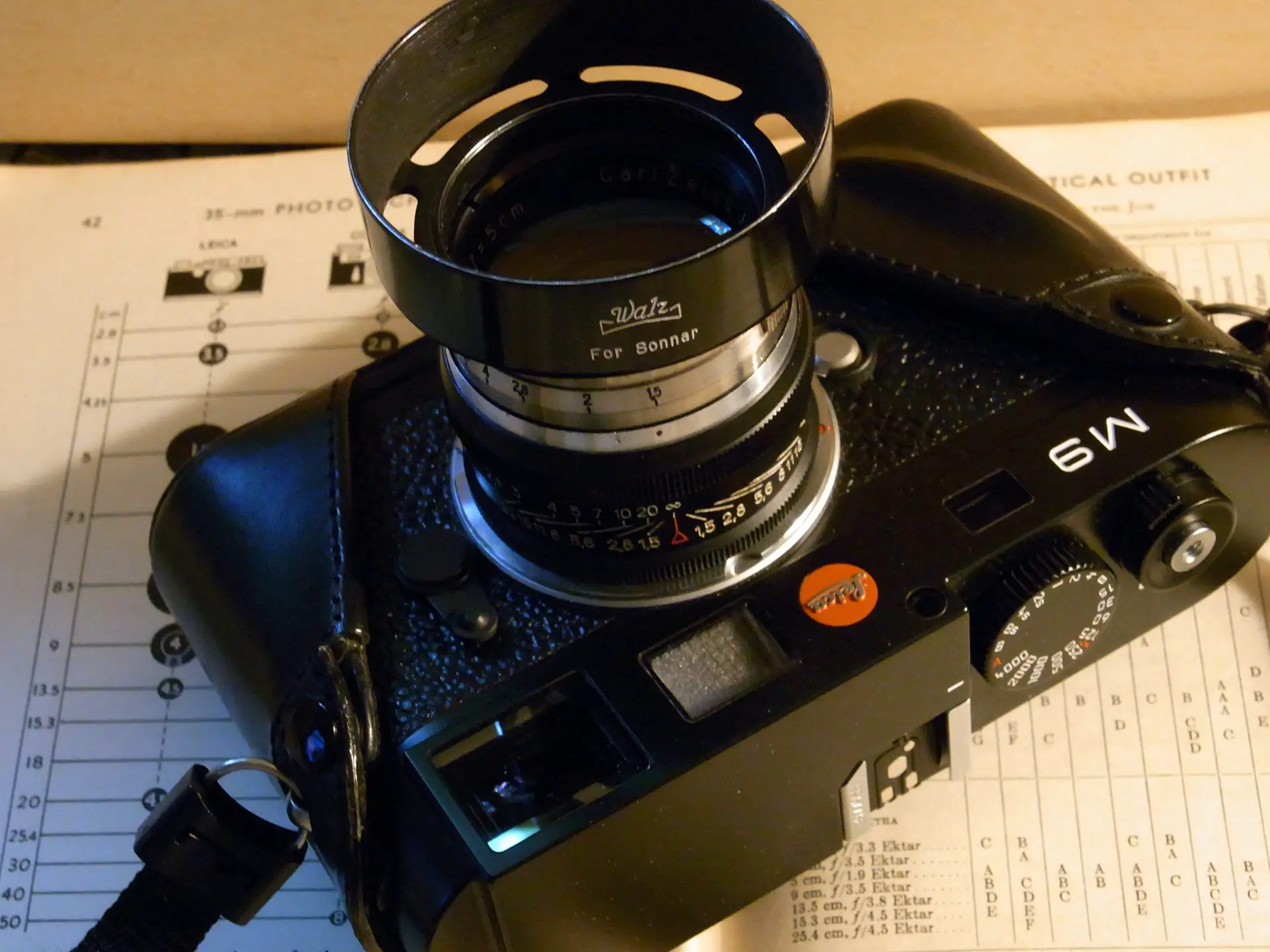brusby
Well-known
Since you're looking for real world examples of these lenses shot wide open, here's another one of the 50mm Summilux pre-asph. You can see it doesn't have the veiling effect and/or loss of contrast wide open that some of the Nikkors have. If you click on the image it'll take you to the Flickr page where you can view it at full size to check resolution.
50mm Summilux pre-asph, Leica M9
 Sal at shop 2 - - Leica M9P, 50mm Summilux V2 at f/1.4 by Brusby, on Flickr
Sal at shop 2 - - Leica M9P, 50mm Summilux V2 at f/1.4 by Brusby, on Flickr
50mm Summilux pre-asph, Leica M9
 Sal at shop 2 - - Leica M9P, 50mm Summilux V2 at f/1.4 by Brusby, on Flickr
Sal at shop 2 - - Leica M9P, 50mm Summilux V2 at f/1.4 by Brusby, on Flickr
Last edited:
Roel
Well-known
Thanx to all. Will definitely be looking at the Contax mount lenses but in the mean time the Millenium 50mm f1.4 really appeals to me as a lens that is maybe commercially useable and a good alternative to the very nice Summilux 50mm pre asph. Have been looking at the other Millenium topics here on the Nikon RF and i like the wide open results too. More clear and a bit sharper across the frame. Will be looking for this Millenium lens as the 'better behaved' lens (WTB add) and see what other maybe F2 opt(i)ons i can find if i want to use a nice rendering lens at f2.8ish.
In the mean time please show/add pictures of these nice lenses, (maybe also color used on digital bodies as i find it sometimes hard to judge the lenses when also also taking into account filmstock/processing and scanning.)
In the mean time please show/add pictures of these nice lenses, (maybe also color used on digital bodies as i find it sometimes hard to judge the lenses when also also taking into account filmstock/processing and scanning.)
Last edited:
Bingley
Mentor
Thanks, Roel. Regarding the f1.4 Nikkor, it is a little soft wide open, but sharpens up quickly at f2.0. The “pandemic gothic” photo I posted above was shot at, I recall, f2.8. Honestly, I don’t do a lot of portrait work that calls for wide open apertures; most of my street photography is shot at f2.8-f4.0, and for landscape photos I stop down even more. Here’s a recent landscape photo taken w/ the Nikkor-SC 5cm f1.4, stopped down to f5.6 or so:Wow steve, thank you very much for your view+thoughts and the added photo's.
I like all the examples you showed and can see why you like the Zeiss sonnars F2 (and 1.5) Will have to look closer at these Contax and Nikon f2 lenses. What is your experience with the F1.4 lenses. Do they add the softer glow characters and are they equal at f2/f2.8/f4?
 Edge of the World by Steve Macfarlane, on Flickr
Edge of the World by Steve Macfarlane, on FlickrBut, to address your question more directly, and satisfy my own curiosity, I just shot the two photos below at max. apertures, using a Leica ME Type 240 w/ the iso set at 3200; I removed filters from each lens.
Zeiss Opton Sonnar 5cm f1.5, wide open:

Nikkor-SC 5cm f1.4, wide open:

To my eyes, the Zeiss Sonnar has a little more contrast wide open than does the Nikkor-SC when shot wide open. One caveat, however: My sample of the Zeiss Opton Sonnar 5cm f1.5 was cleaned and serviced by Henry Scherer at the same time I had my Contax IIa repaired and overhauled. My sample of the Nikkor-SC has not been serviced, at least not to my knowledge. I think the bokeh from each lens is practically identical; I can’t tell any difference. One final caveat: these are hand-held shots; I did not use a tripod.
Bingley
Mentor
One further thought, prompted by Bruce Brusby’s comment and photos above: The Nikkor-HC 5cm f2.0 is another excellent lens that may be worth looking for. My sample is LTM, purchased from a member here a number of years ago. There’s a thread devoted to this lens here on RFF. If you’re shooting digital and can focus w/ live view, this particular lens has a huge advantage over the other Nikkor and Zeiss lenses dicussed here: it can focus down to about 1 1/2 feet, i.e. closer than the usual rangefinder coupling (you can focus close using a rangefinder but will be guesstimating the distance closer than a meter; this problem is solved by focusing using live view on a digital camera).
Here are a couple of sample pix, both taken on the ME 240 Leica:
Close-up, and f2.0 or 2.8, using Live View:
 Grandma’s hands... by Steve Macfarlane, on Flickr
Grandma’s hands... by Steve Macfarlane, on Flickr
And a shot taken in evening light, focused normally. Probably f2.8:
 Chevy by Steve Macfarlane, on Flickr
Chevy by Steve Macfarlane, on Flickr
Here are a couple of sample pix, both taken on the ME 240 Leica:
Close-up, and f2.0 or 2.8, using Live View:
 Grandma’s hands... by Steve Macfarlane, on Flickr
Grandma’s hands... by Steve Macfarlane, on FlickrAnd a shot taken in evening light, focused normally. Probably f2.8:
 Chevy by Steve Macfarlane, on Flickr
Chevy by Steve Macfarlane, on FlickrAll the 1.4/1.5 Sonnars have spherical aberration (some use the term 'veiling flare') wide-open (the LTM 50mm Nikkors are also Sonnars.) The contrast improves dramatically by f/2 or even f/1.8ish.
Pull up this page using a desktop browser and mouse over the image, look for the increase in contrast. This is a 50/1.5 Opton-Sonnar wide-open, and at f/2. Took these photos 10 years ago or so using a Panasonic G1.
Pull up this page using a desktop browser and mouse over the image, look for the increase in contrast. This is a 50/1.5 Opton-Sonnar wide-open, and at f/2. Took these photos 10 years ago or so using a Panasonic G1.
Last edited:
Bingley
Mentor
Right! My understanding is that it’s the spherical aberration that contributes to the Sonnar signature wide open, i.e. sharp in the center of the photo but w/ a lovely dissolve into blur as you move away from the center. It’s an example of a lens “defect” actually being a desired quality in a particular lens design.All the 1.4/1.5 Sonnars have spherical aberration (sometimes called 'veiling flare') wide-open (the LTM 50mm Nikkors are also Sonnars.) The contrast improves dramatically by f/2 or even f/1.8ish.
Pull up this page using a desktop browser and mouse over the image, look for the increase in contrast. This is a 50/1.5 Opton-Sonnar wide-open, and at f/2. Took these photos 10 years ago or so using a Panasonic G1.

Zeiss Jena 5cm Sonnars - The Magic of the Prewar Uncoated Sonnar - By Brian Sweeney
Interchangeable lens 35mm rangefinder cameras became popular almost 90 years ago when Leitz introduced the Leica II and Zeiss debuted the Contax I. Both companies brought out full lines of lenses, and dominated the market for 35mm format. The design philosophies of the two companies were very...
I wrote the above article on Sonnars, will be doing a new article soon- "90 Years of Sonnars" which will cover from my 1934 5cm F2 Sonnar compared with the newest.
Veiling Flare is different from spherical aberration. Veiling flare is due to internal reflections, tends to boost the shadows. Spherical Aberration is due to the focal length of the lens changing with aperture. Wide-Open. The focal Length is a function of the distance from the center point of light entering the lens. Used wide-open, you get overlapped images that looks like a ghosting effect. Field curvature is high on a Sonnar formula lens, which also reduces astigmatism. Not as many swirlies.
Bingley
Mentor
Thanks for the clarification, Brian. I think I should have been referring to field curvature in my previous comment.
Zeiss Jena 5cm Sonnars - The Magic of the Prewar Uncoated Sonnar - By Brian Sweeney
Interchangeable lens 35mm rangefinder cameras became popular almost 90 years ago when Leitz introduced the Leica II and Zeiss debuted the Contax I. Both companies brought out full lines of lenses, and dominated the market for 35mm format. The design philosophies of the two companies were very...www.35mmc.com
I wrote the above article on Sonnars, will be doing a new article soon- "90 Years of Sonnars" which will cover from my 1934 5cm F2 Sonnar compared with the newest.
Veiling Flare is different from spherical aberration. Veiling flare is due to internal reflections, tends to boost the shadows. Spherical Aberration is due to the focal length of the lens changing with aperture. Wide-Open. The focal Length is a function of the distance from the center point of light entering the lens. Used wide-open, you get overlapped images that looks like a ghosting effect. Field curvature is high on a Sonnar formula lens, which also reduces astigmatism. Not as many swirlies.
brusby
Well-known
Not to be pedantic, but just for clarification for some who may be new to this, many things can cause loss of contrast -- typically anything that misdirects light from its intended point of focus -- including spherical aberration, flare from internal surfaces often including uncoated glass to glass interfaces, as well as scratches or other imperfections on or in the glass.
Because our vision is logarithmic it takes just a very small amount of light falling on the darkest shadows to make them appear lighter than they should be, thus decreasing contrast. In Ansel Adams' speak it's very easy to raise a zone I black to a zone II or even a zone III. A tiny amount of misdirected light is capabable of doing it. But, that same amount of light falling on a much brighter area, such as a zone VII, VIII or IX would have almost no apparent effect at all.
Steve, its amazing how similar the renderings of your Zeiss and Nikkor are, except for the slight added veiling or loss of contrast of the Nikkor. They are even similar in the amount of vignetting in the corners. The one small thing that keeps drawing my attention is the rendering of the three small light spots in the lower left. They look like triangular guitar pics in the Zeiss image but much more circular in the Nikkor. It's so minor but I guess just another example of how bright spots in an image can draw attention. BTW, beautiful image of the baby with your f2 Nikkor.
Because our vision is logarithmic it takes just a very small amount of light falling on the darkest shadows to make them appear lighter than they should be, thus decreasing contrast. In Ansel Adams' speak it's very easy to raise a zone I black to a zone II or even a zone III. A tiny amount of misdirected light is capabable of doing it. But, that same amount of light falling on a much brighter area, such as a zone VII, VIII or IX would have almost no apparent effect at all.
Steve, its amazing how similar the renderings of your Zeiss and Nikkor are, except for the slight added veiling or loss of contrast of the Nikkor. They are even similar in the amount of vignetting in the corners. The one small thing that keeps drawing my attention is the rendering of the three small light spots in the lower left. They look like triangular guitar pics in the Zeiss image but much more circular in the Nikkor. It's so minor but I guess just another example of how bright spots in an image can draw attention. BTW, beautiful image of the baby with your f2 Nikkor.
dourbalistar
Buy more film
By the way, here is the thread about the Nikkor-H.C 5cm f/2 LTM that @Bingley mentioned. Also testing to see how well links on the new forum software work:There’s a thread devoted to this lens here on RFF.
Nikkor HC 50mm F2... Wow, I am impressed
So, my deal-hunting finally paid off on the auction site and I found a nice Nikkor HC. This lens has exactly the right OOF areas that I am looking for and has absolutely wonderful ergonomics. I took the following picture with my Bessa R2 a 1/500th of a second wide open with the Nikkor lens...
rangefinderforum.com
Roel
Well-known
Looking at these pictures again and it is incredible how close these lenses perform. I could imagine that if you would have two examples of either the Nikor or Zeiss you could see more differences between examples.Thanks, Roel. Regarding the f1.4 Nikkor, it is a little soft wide open, but sharpens up quickly at f2.0. The “pandemic gothic” photo I posted above was shot at, I recall, f2.8. Honestly, I don’t do a lot of portrait work that calls for wide open apertures; most of my street photography is shot at f2.8-f4.0, and for landscape photos I stop down even more. Here’s a recent landscape photo taken w/ the Nikkor-SC 5cm f1.4, stopped down to f5.6 or so:
Edge of the World by Steve Macfarlane, on Flickr
But, to address your question more directly, and satisfy my own curiosity, I just shot the two photos below at max. apertures, using a Leica ME Type 240 w/ the iso set at 3200; I removed filters from each lens.
Zeiss Opton Sonnar 5cm f1.5, wide open:
View attachment 4815124
Nikkor-SC 5cm f1.4, wide open:
View attachment 4815125
To my eyes, the Zeiss Sonnar has a little more contrast wide open than does the Nikkor-SC when shot wide open. One caveat, however: My sample of the Zeiss Opton Sonnar 5cm f1.5 was cleaned and serviced by Henry Scherer at the same time I had my Contax IIa repaired and overhauled. My sample of the Nikkor-SC has not been serviced, at least not to my knowledge. I think the bokeh from each lens is practically identical; I can’t tell any difference. One final caveat: these are hand-held shots; I did not use a tripod.
Performance of the Nikkor lenses is much more uniform. Nikon revised the optical formula for the 5cm F1.4, the newer design has larger diameter optics. This occurred around SN 33xxxx. I have two of the early design. Performance of the Zeiss lenses- varied more from sample-to-sample. This is true of the Carl Zeiss Jena lenses as well. Cement failure in the post-war West-German Zeiss lenses is common. SO- on the West German Carl Zeiss 50mm F1.5,you may need more than two samples for a good comparison. I've shot with 10 or so. The Nikkor 5cm F1.4, about the same.
xayraa33
rangefinder user and fancier
I would go for the Nikkor H 50mm f2 lens in LTM.
Roel
Well-known
Been looking at the above mentioned Nikkor-H.C 5cm f/2 thread. Beautifull pics!I would go for the Nikkor H 50mm f2 lens in LTM.
Comparing a Zeiss Sonnar f/2 wide open vs an f/1.5 wide open:
I just received two Sonnars from @Sonnar Brian calibrated for use with an Amedeo S-mount adapter, here are test shots he sent me, wide open on both lenses. Compare the contrast of the f/2.0 wide open to the f/1.5 wide open:


I just received two Sonnars from @Sonnar Brian calibrated for use with an Amedeo S-mount adapter, here are test shots he sent me, wide open on both lenses. Compare the contrast of the f/2.0 wide open to the f/1.5 wide open:


Nikkor 50/2, Zeiss 50/2, and Zeiss 50/1.5 using the Amedeo s-mount {Nikon RF} adapter.






Bingley
Mentor
Very Nice!! What adapters are those? I’m always looking for adapters that will mount Contax RF and/or Nikon S mount lenses on Leica thread mount cameras…Nikkor 50/2, Zeiss 50/2, and Zeiss 50/1.5 using the Amedeo s-mount {Nikon RF} adapter.



Roel
Well-known
Wow that black Leica with the Black nikkor lens... so beautifull!!Nikkor 50/2, Zeiss 50/2, and Zeiss 50/1.5 using the Amedeo s-mount {Nikon RF} adapter.



Roel
Well-known
The F2 looking very nice. Love that contrast in this pictureComparing a Zeiss Sonnar f/2 wide open vs an f/1.5 wide open:
I just received two Sonnars from @Sonnar Brian calibrated for use with an Amedeo S-mount adapter, here are test shots he sent me, wide open on both lenses. Compare the contrast of the 1.5 wide open to the 2.0 wide open.


Very Nice!! What adapters are those? I’m always looking for adapters that will mount Contax RF and/or Nikon S mount lenses on Leica thread mount cameras…
Amedeo Nikon RF (s-mount) to Leica thread mount.
Share:
-
This site uses cookies to help personalise content, tailor your experience and to keep you logged in if you register.
By continuing to use this site, you are consenting to our use of cookies.

